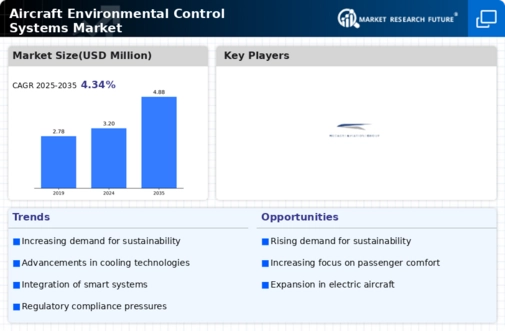Leading market players are participating heavily in research and development to expand their product lines, which will help the aircraft environmental control systems market grow even more. Market players are also undertaking various strategic activities to expand their footprint, with important market developments including new product launches, contractual agreements, mergers and acquisitions, higher investments, and collaboration with other organizations. The Aircraft Environmental Control Systems industry must offer cost-effective items to expand and survive in a more competitive and rising market climate.
Manufacturing locally to minimize operational costs is one of the key business tactics manufacturers use in the Aircraft Environmental Control Systems industry to benefit clients and increase the market sector. The Aircraft Environmental Control Systems industry has offered some of the most significant technological advantages in recent years. Major players in the aircraft environmental control systems market, including Liebherr-International AG (Switzerland), Honeywell International (U.S.), Jormac Aerospace (U.S.), Mecaer Aviation Group (Italy), Fimac Spa (Italy), United Technologies Corporation (U.S.), and others, are attempting to increase aircraft environmental control systems market demand by investing in research and development operations.
A worldwide technology and manufacturing company, Honeywell International Inc. is a leading provider of aerospace products and services, control systems, security systems, safety and productivity solutions, specialty chemicals, advanced materials, refining and petrochemical process technology, energy efficiency, and specialty chemicals. Its primary business is aerospace, building technology, performance materials and technologies, safety and productivity solutions, and safety and productivity solutions. A public American multinational conglomerate corporation, Honeywell International Inc., is headquartered in Charlotte, North Carolina.
Liebherr-International AG (Switzerland) was founded in 1949 and is the world's largest manufacturers of construction equipment, as well as offering quality, user-friendly products and services. Over 140 companies in over 140 countries employ nearly 50,000 people in this family-run technology company. In addition to Earthmoving and Deep Foundation Machines, Liebherr manufactures mobile and crawler cranes, tower cranes, concrete technology, material handling technology, mining, maritime cranes, aerospace and transportation systems, gear and automation systems, refrigeration and freezing, component manufacturing, and hotels in Germany, Austria and Ireland. In 2019, a new Liebherr service center and sales center opened in Kuhwerder Harbor.
The center is easily accessible by car, train, and public transportation and offers direct access to the water via three quays.


















Leave a Comment